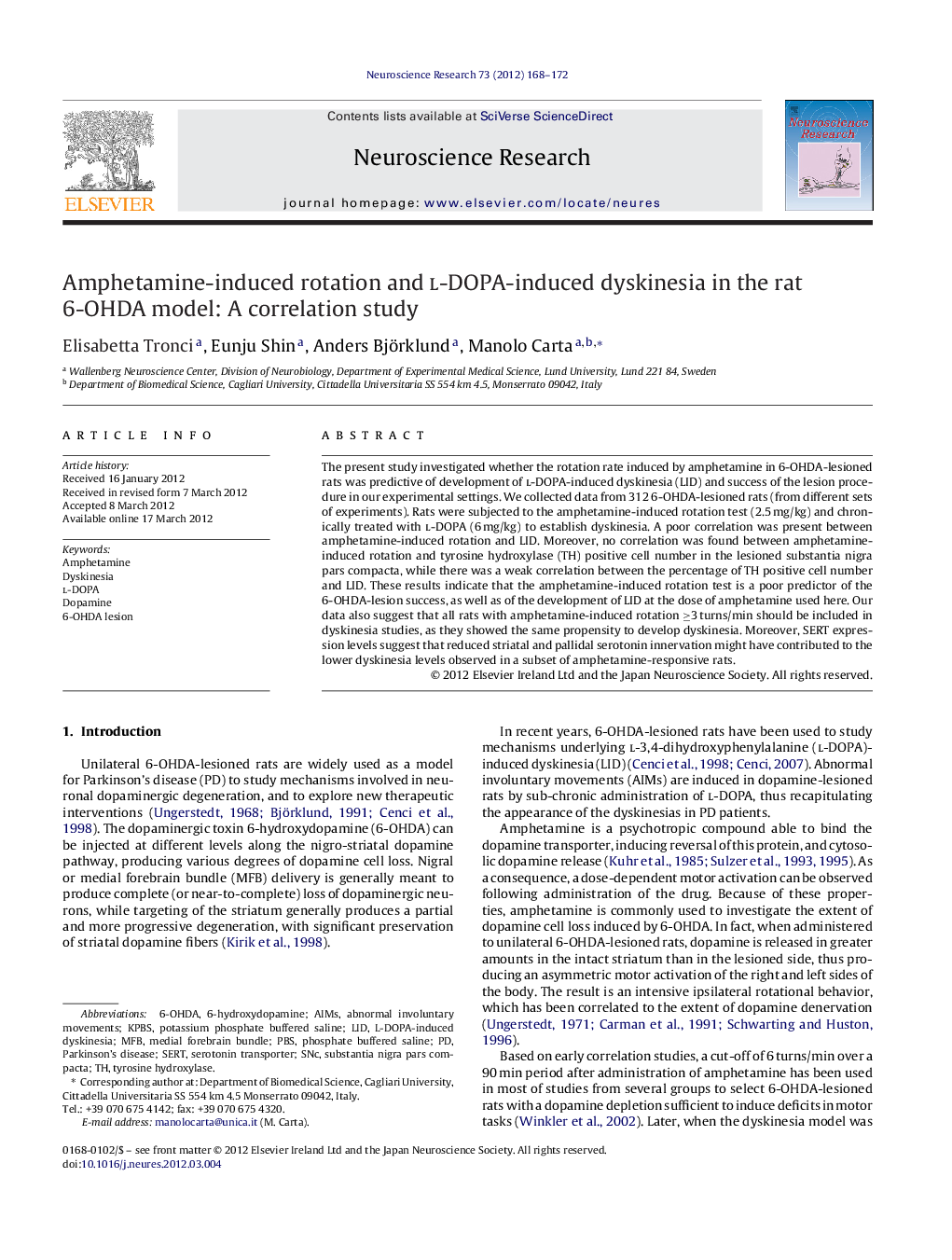| Article ID | Journal | Published Year | Pages | File Type |
|---|---|---|---|---|
| 4351810 | Neuroscience Research | 2012 | 5 Pages |
The present study investigated whether the rotation rate induced by amphetamine in 6-OHDA-lesioned rats was predictive of development of l-DOPA-induced dyskinesia (LID) and success of the lesion procedure in our experimental settings. We collected data from 312 6-OHDA-lesioned rats (from different sets of experiments). Rats were subjected to the amphetamine-induced rotation test (2.5 mg/kg) and chronically treated with l-DOPA (6 mg/kg) to establish dyskinesia. A poor correlation was present between amphetamine-induced rotation and LID. Moreover, no correlation was found between amphetamine-induced rotation and tyrosine hydroxylase (TH) positive cell number in the lesioned substantia nigra pars compacta, while there was a weak correlation between the percentage of TH positive cell number and LID. These results indicate that the amphetamine-induced rotation test is a poor predictor of the 6-OHDA-lesion success, as well as of the development of LID at the dose of amphetamine used here. Our data also suggest that all rats with amphetamine-induced rotation ≥3 turns/min should be included in dyskinesia studies, as they showed the same propensity to develop dyskinesia. Moreover, SERT expression levels suggest that reduced striatal and pallidal serotonin innervation might have contributed to the lower dyskinesia levels observed in a subset of amphetamine-responsive rats.
► The amphetamine-induced rotation test is not a good predictor of LID development. ► LID develop to the same extent in all animals rotating ≥3 turns/min. ► The magnitude of dopamine depletion is not a good predictor of LID susceptibility.
